|
From Middle England
For eight years following the death of F.E. “Bill” Pardoe, I served as the crime fiction critic of the Birmingham Post on condition that my contract stipulated that I never had to visit Birmingham. One of my most exciting discoveries during this time, however, was a collection of short stories written, set and published right on the Post’s doorstep.
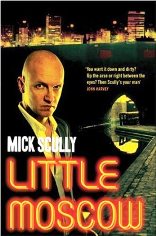
In 2007 I wrote: Mick Scully’s linked stories in Little Moscow (Tindal Street Press) is the most powerful debut of the year, if not for the faint-hearted, offering an unglamorous tour of the darker side of Birmingham, written with gritty power and energy; and made Little Moscow my Debut Shot of the Year in this very column.
Now, after a gap of more than six years, Mick Scully (who lists among his previous professions: bouncer, teacher, acupuncturist and Humanist funeral minister) has produced his first full-length novel, The Norway Room, which will be published by the Tindal Street Press in March 2014. I am assuming the book is set in the badlands of Birmingham rather than Scandinavia and if that is the case, I am looking forward to it very much.
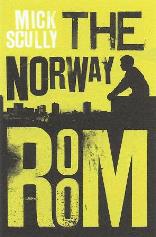
Nihil sub sole novum
I have never claimed to be a great reader of science fiction and in my limited experience many sci-fi novels present superbly imaginative set-ups (e.g. Philip K. Dick’s The Man in the High Castle) but then fail or disappoint in bringing the plot to a satisfactory resolution. Yet occasionally I am tempted by particular authors who I know can write well, one such favourite being Harry Harrison, famous for his ‘Stainless Steel Rat’ series and for Make Room, Make Room (effectively a crime novel with a futuristic setting) which was much scarier when filmed as Soylent Green.
I was therefore tempted to read Harrison’s Rebel In Time in which a time-travelling racist madman attempts to alter the outcome of the American Civil War by arming the armies of the Confederate States with Sten guns and a (black) special agent is sent back to 1859 to stop him, which he does mainly thanks to the fact that the time-travelling racist madman has never bothered to read a history book! It is an interesting idea for a book although perhaps it fails to answer many of the questions it almost raises.
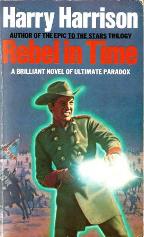 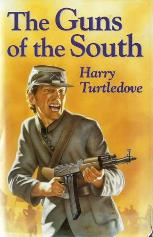
Imagine my surprise when I came across Harry Turtledove’s novel The Guns of the South, published in 1992 nine years after Rebel In Time, where the plot revolves around a group of mad white supremacists who travel back in time to supply automatic weapons to the armies of Robert E. Lee…
Of course, the two plots are completely different. In one the weapon of mass destruction is the British Sten gun; in the other, the Russian AK-47. (Which might suggest that American gun manufacturers weren’t up to the job, or perhaps had better lawyers.)
Such coincidences can occur in crime fiction and in some cases are openly acknowledged, such as in A Penknife in My Heart by Nicholas Blake where the plot revolves around two men – strangers – who meet (in a pub) and ‘swap’ murders.
When published in 1958, somebody somewhere pointed out that a rather similar idea had been used by the talented Miss Patricia Highsmith in 1950 andthat her novel Strangers on A Train had been made into an Oscar-nominated film by the equally talented Mr Hitchcock. As a consequence, when A Penknife in My Heart came out in paperback in 1960, Nicholas Blake included the following Postscript:
After this book had gone to press, I discovered that the basis of its plot is similar to that of a novel by Patricia Highsmith, Strangers on A Train, published in 1950 by The Cresset Press, and later made into a film. I had never readthis novel, or seen the film, nor do I remember ever hearing about them. My own treatment of the basic idea – the switching of victims – is very different from Miss Highsmith’s. But two of the chief characters in my story, I found to my consternation, bear the same Christian names as two in hers; and I should like to thank Miss Highsmith for being so charmingly sympathetic over the predicament in which the long arm of coincidence put me.
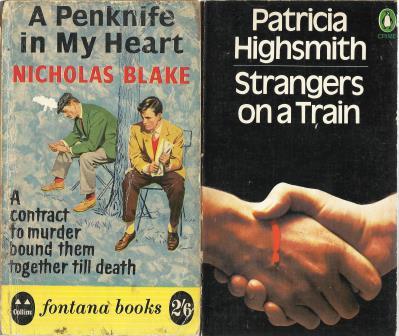
Whilst embarrassment seems to have been avoided and tension defused, one can only wonder how a crime-writer such as Nicholas Blake (who had published 13 novels by 1958) had never heard of Strangers on A Train, Highsmith or Hitchcock. Presumably Blake was busy with his day jobs as a publisher (!), an academic and as a rather famous poet under his real name, Cecil Day-Lewis. And of course he might have been distracted by the birth, in 1957, of his new son Daniel. I wonder what ever became of him….
Farewell Bob
I was shocked to hear of the death of Robert Barnard last month, being totally unaware that he had been admitted to a nursing home in Leeds in January.

Bob was one of a quartet of male writers producing witty and zestful novels who were born in 1936, and with his contemporaries Reginald Hill, Peter Lovesey and Jonathan Gash, formed a solid backbone for traditional British crime writing in the last quarter of the twentieth century. Unlike his contemporaries, his books never benefitted from television adaptations or even large paperback runs. For many years, paperback editions were only available in America where, it is probably fair to say, he was far better known.
Readers of Bob’s novels (I think there were more than 40 of them; novels that is, not readers) will have their favourites. Mine are Mother’s Boys, Sheer Torture and Political Suicide, but I would also recommend most highly some of his non-fiction. In particular, his 1980 defence of the work of Agatha Christie, A Talent To Deceive, which is exhaustive and scrupulously fair. (He describes Passenger to Frankfurt as a thriller which “slides from the unlikely to the inconceivable and finally lands up in an incomprehensible muddle”.)
I would also urge everyone to read his essay The English Detective Story in the 1982 Whodunit? Guide to Crime, Suspense and Spy Fiction (edited by H.R.F. Keating) which is still the most succinct analysis of ‘The Big Four’ female writers of the ‘Golden Age’ (Christie, Sayers, Allingham and Marsh).
Eastern Approaches
If this column is noted the world over for two particular qualities, they are its serious and impartial assessment of Scandiwegian crime fiction and its unashamed championing of crime writers from East Anglia, many of whom are probably tenants of the Ripster estate.
Consequently, I am delighted to see that Jim Kelly, who lives on the edge of the lawless Fens in Ely (famed for its battleship of a cathedral), has a new book out from Crème de la Crime, with the wonderful title The Funeral Owl.

I believe I must refer to this as the second in the ‘return of Philip Dryden’ series and it will be a very welcome return for Kelly’s fictional journalist (now editor) hero whose debut investigation was in Jim’s much-lauded novel The Water Clock back in 2002. If you have to ask, a funeral owl is not a character from the world of Harry Potter, but a real bird – aegolius funereus – sometimes called Tengmalm’s Owl, after a Swedish ornithologist, which may go some way to explaining its description as ‘unsociable and nocturnal’.
Although she had distant relatives in East Anglia, the famous crime writer Josephine Tey (Elizabeth Mackintosh, 1896-1953) was born in Scotland. Her latest adventure as a reincarnated fictional detective (Hollywood would say ‘re-imagined’), The Death of Lucy Kyte from Faber, however, takes her deep into the dark heart of Suffolk, which is deepest East Anglia.
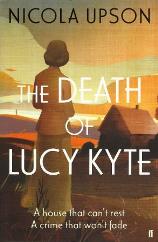
But Miss Tey the amateur detective (as opposed to Miss Tey the very professional author of the legendary The Daughter of Time) is in good hands, as her creator or ‘reincarnator’ is Nicola Upson, who was born in Bury St Edmunds and educated in Cambridge.
The Death of Lucy Kyte is the fifth in Nicola’s successful ‘Tey’ series and there are even more strong East Anglian criminal connections. Much of the action takes place in the village of Polstead, not only the location of the infamous Red Barn murder of 1827, but also for many years the home of Baroness Ruth Rendell.
Bohemian Rhapsody
Following the stunning success of the first Chianti Crime Festival sponsored by the Chianti producers of Tuscany this summer, there are rumours of a rival crime fiction festival being planned in the Czech Republic centred on the enchanting city of Prague. It is a city I have never visited but one which has featured prominently in crime and thriller fiction, notably in Lionel Davidson’s Dagger-winning debut novel The Night of Wenceslas in 1960.
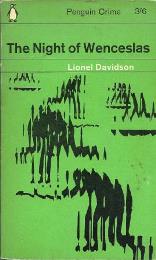
In the following decades, Brian Cleeve’s thriller Exit from Prague was set during the 1968 Russian invasion and David Brierley’s 1995 novel On Leaving A Prague Window in the aftermath of the Prague Spring, though it takes its clever title from the second ‘Defenestration of Prague’ in 1618 (there was an earlier one in 1419) when Catholic noblemen Slavata and Martinic made their famous exit and as a consequence kicked off the Thirty Years War.
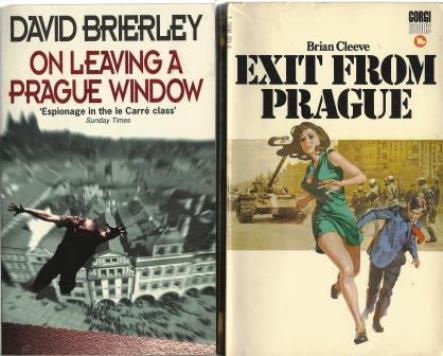
Then came Prague Fatale, set in 1942 and published in 2011 as part of Philip Kerr’s acclaimed Bernie Gunther series, which I raved about in a recent column.
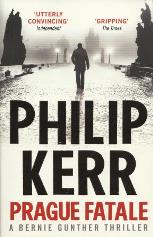
The exciting prospect of a crime writing convention in such an historic city is made even more exciting by the possibility that the event could be sponsored by the Bohemian Brewers Association who, just about the time Edgar Allan Poe was developing the detective story, were themselves developing the fine ‘Pilsner’ style beers for which the region became famous – an equally important contribution to culture and civilisation.
Catching Up on John Blackburn
I was delighted to be asked by Valancourt Books of Richmond, Virginia, to supply an introduction to their recent reissue of John Blackburn’s excellent 1963 crime novel set in the world of antiquarian books, Blue Octavo. Not only did those discerning and generous people at Valancourt supply me most speedily with a finished copy, but also sent a gift in the shape of the one John Blackburn (1923-1993) novel I had never read, their splendid new edition of The Flame and the Wind
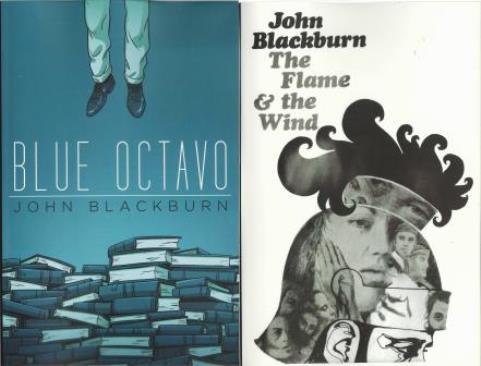
First published in 1967, The Flame and the Wind is not, at first sight, a typical Blackburn mixture – he was famed for blending the spy thriller or crime story with lashings of Gothic horror, a spicing of the supernatural and the threat of biological or bacteriological warfare. For a start, it is an historical novel – I think his only one – and it is set in the Roman Empire just as Caligula assumes the blood-stained Imperial purple, a few years after a crucifixion in Judea has given rise to a dangerous new religious sect.
Amongst Rome’s senior spymasters (shades of Smiley’s People here), the feeling is that the teachings and beliefs of these dangerous ‘Christians’ could eventually pose a serious threat to the very foundations of the Empire, so a counter-intelligence operation is launched to try and discredit the memory of the sect’s prophet, a certain Jesus-bar-Joseph. The Roman spies, having been briefed by Pontius Pilate, set up their operation in Judea in an attempt to dig up as much dirt as possible on their target and soon find they have bitten off more than they can chew thanks to the intervention of Judas Iscariot’s daughter, Saul of Tarsus (something of a ‘Karla’ figure to the Romans), violent Zealots, equally violent Christians, Roman traitors and the fact that their ultimate boss (or ‘Control’) Caligula is as mad as a Ligurian badger.
The pace of the story is pure Blackburn with his customary rapid changing of scenes, locations – and alliances. There is even a trademark Gothic touch at the end in the way Caligula devises the death of two of the characters. All in all this is an imaginative, exhilarating thriller which uses the techniques of the spy fiction genre to highlight the story of the formative years of the Christian religion and perhaps only an imagination like that of John Blackburn would have conceived of it.
|
|
See Veneto and Die
It has long been an ambition of mine to get to grips with the work of the much-lauded godfather of ‘Mediterranean Noir’ Massimo Carlotto, but earlier this year I was defeated by what I considered to be a far from satisfactory translation of his novel At the End of A Dull Day.
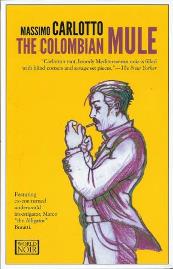
However, those enthusiastic publishers at Europa Editions have now produced – in their World Noir series – an English edition of Carlotto’s 2001 hardboiled thriller The Colombian Mule which features the author’s most famous creation, the ex-con turned investigator known as ‘The Alligator’ whose favourite drink is an Alligator – seven parts Calvados plus three parts Drambuie.
Set mostly in the Veneto region of north-east Italy, The Colombian Mule takes on the Italian judicial system, drug-running and organised crime, and takes few prisoners as it does so. Like most true noir it is likely to find only a limited audience, which is a pity as there is considerable power and emotion in the writing here – and, I am delighted to say, in the translation by American (?) Christopher Woodall, which rarely intrudes on the pervading nihilistic mood. I have only one minor quibble with the translation in that the beautiful Italian city of Padova is better known to English-speaking audiences as Padua, the setting for The Taming of the Shrew and sometimes known as ‘Venice’s overlooked little sister’.
From the Allingham Archive
I have been working this summer in the Margery Allingham Archive in the Albert Sloman Library at the University of Essex, for reasons which will eventually become clear, but I find I am not alone in renewing my interest in the works of that great Margery (1904-1966) who spent the majority of her writing life in the Essex village of Tolleshunt d’Arcy.
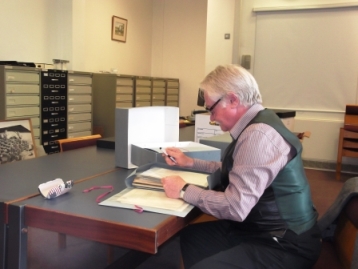
P.D. James, no less, has said that ‘Margery Allingham deserves to be rediscovered’ and it is a sentiment echoed by The Folio Society who have just produced a sumptuous new edition of her classic thriller The Tiger in the Smoke from 1952. With an introduction by Alexander McCall Smith and illustrations (see below) by Finn Campbell-Notman, the Folio Society’s edition is sure to become a collector’s item
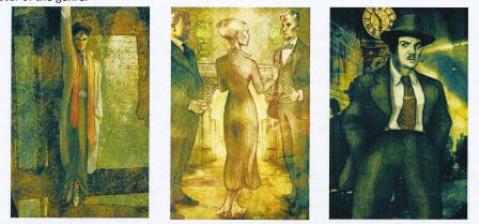
I have to admit that not only is Tiger in the Smoke my favourite Allingham novel, but my 1957 Penguin edition has one of my favourite covers in crime-fiction, designed by David Caplan.
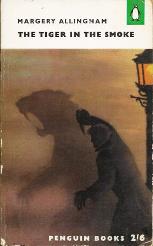
Such talk of book covers and dust jackets provides a neat segue into the work of Margery Allingham’s husband Philip ‘Pip’ Youngman Carter, who collaborated with her on many of her novels and who finished her final Albert Campion novel, Cargo of Eagles, after her death in 1966. Youngman Carter, a journalist and artist, was also responsible for several Allingham dust jackets, as that was very much his main profession, designing in all over 2,000 covers for books by Simenon, Graham Greene, E.C. Bentley and Gladys Mitchell among others. He also wrote short stories (many of which were published in Argosy), travel books, wine guides and two further adventures of Albert Campion, Mr Campion’s Farthing and Mr Campion’s Falcon which have been disgracefully out of print for many years but which are about to appear in new editions (and eBooks) thanks to the Margery Allingham Society and Ostara Publishing.
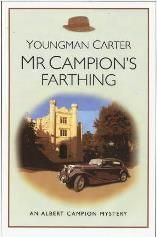 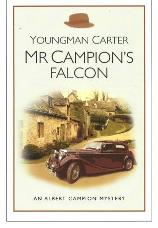
And another Revival
Perhaps the most unusual cover blurb I have ever read comes on the back cover of the latest reissue in Oleander Press’ London Bound series.
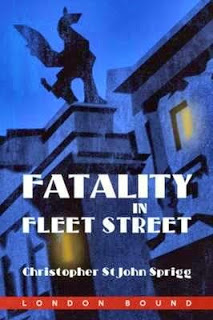
The book in question is Fatality in Fleet Street, first published in 1933, by Christopher St John Sprigg, who died 75 years ago, and the blurb rather proudly boasts that the book has been “Unheard of for decades”! One is tempted to ask why.
Brought Forward
One of the much-anticipated anniversaries to be celebrated in 2014 was that which would mark 50 years with the same publisher, Macmillan, for that living legend of the adventure-thriller, Wilbur Smith, now in his 80th year. However, Smith’s decision to move to HarperCollins and to ‘franchise’ his bestselling fiction, working with other writers, à la James Patterson and Clive Cussler, has rather put a damper on things.
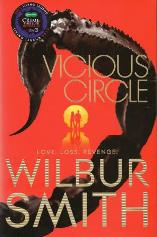 
As I understood it, Wilbur’s 34th novel was to have been published in 2014 as a focus for the celebrations, but now Macmillan have brought forward the publication of Vicious Circle to this month, thus ensuring that copies will find their way into the Christmas stockings of thousands, if not millions, of Dads.
Spoiler Alerts
There was a time when honest, hard-working book reviewers were threatened with pseudo-legal ‘Embargoes’ (“not worth the legal paper they were not written on” as one distinguished critic once retorted) insisting that nothing must be revealed about a book until publication date. In recent years, publishers have become more relaxed (careless?) about publication dates and today it is quite rare to see the word “Embargoed” splashed across the press release which always accompanies new titles, although the new John Grisham, from Hodder, maintains the tradition.
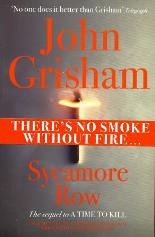
In the spirit of responsible citizenship and the fact that John Grisham not only has good lawyers, but also is one, I will say no more than that Sycamore Row is published on 22nd October, is probably set in America and there’s a highchance it might be about lawyers.
Those cavalier publishers Orion foolishly sent me the new Ian Rankin novel Saints of the Shadow Bible over two months before its release to mere mortals. For that I am extremely grateful and will therefore try not to spoil the book for the poor masses huddled in queues outside bookshops on 7th November.
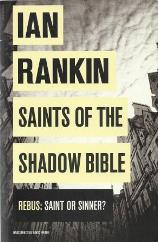
I will say only that the book features the seemingly indestructible Inspector Rebus getting uncomfortably close to ‘Complaints’ (internal affairs investigations) officer Malcolm Fox, a 30-year-old killing in which Rebus could be a suspect, a very suspicious road accident, drug-dealing and more murders, all played out against the Yes/No political campaign on Scottish Independence and with a sub-text of the strains of loyalty, among saints and sinners alike.
Okay, now it is time for the Spoiler Alert: Saints of the Shadow Bible is very, very good indeed and it is good, as always, to see Rebus back in action, unrepentantly still smoking and drinking too much with his dubious dietary habits and his love of unsuitable (for a man of his age) music – played on vinyl, naturally. That’s not to say that things have not changed over the years. It came as a bit of a shock to read that Rebus’s phone alerted him to an incoming call. I remember the days when Rebus’s phone rang would have been sufficient.
Later in November, Orion will be busy again, with the publication of the new Michael Connelly novel The Gods of Guilt on the 21st.
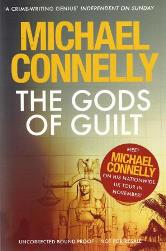
Moreover, the author, who has been writing irritatingly excellent crime novels for over twenty years now, will be celebrating publication on a nationwide tour of the United Kingdom.
Although Orion have kindly sent me a copy, I haven’t yet got around to reading it and so all I can say, not caring whether this is a ‘spoiler’ or not, is that The Gods of Guilt features Connelly’s series hero ‘Lincoln Lawyer’ Mickey Haller rather than his other series hero Harry Bosch. Quite why an author should have two such excellent series strikes me as plain greedy, though it shouldn’t come as any sort of spoiler to learn that I (and many other crime writers way down the food chain) think that. Okay, so I’m jealous. Deal with it.
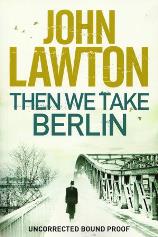
With perfect timing, I received on my birthday an advance copy of John Lawton’s new novel Then We Take Berlin which will be published by Grove Atlantic on 5th December, so I suppose I have to count it as an early Christmas present as well.
A regular reader of this column (I am told there is one) will know that I am a long-standing fan of John Lawton’s historical spy thriller fiction, mostly set during and immediately after World War II. Those not intimately connected with the world of crime writing (we call them ‘Muggles’) may not have realised just how much Lawton and I have in common. We are both gentlemen of a certain age, both Trotskyist hardliners when it comes to the revolution, we both live intensely private lives as tenant farmers (John owning almost all of Derbyshire, whereas I am satisfied with East Anglia), neither of us are said to suffer fools only sadly, both having ill-founded reputations for being curmudgeons - Sod off and leave us alone! – and both having a deep respect for the late Gore Vidal. (Both of us, being inveterate liars can guarantee only 20% of the previous paragraph).
In fact, John has dedicated his new novel to Vidal the Master, who sadly died last year, with the words: The planet has lost its most barbed critic. The job of world class pain-in-the-arse is now vacant. It is a sentiment I could not have put better myself and I intend to polish up my c.v. and apply for the vacancy immediately.
As to spoiler alerts on Then We Take Berlin, I can confidently say, without having read a word, that it is a stand-alone novel outside his wonderful ‘Troy’ series, set in Berlin in 1963 and that it is extremely good.
St Crispin’s Day Giveaway
As St Crispin’s Day falls in October, this is all the excuse I need to promote that under-sung crime writer and crime fiction critic Edmund Crispin (Bruce Montgomery, 1921-1978).
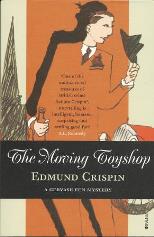  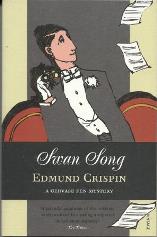
I have long been a fan of Crispin’s clever and witty novels, particularly The Moving Toyshop from 1946, which the late Harry Keating placed on his list of ‘100 Best’ – a choice with which few sane people would disagree.
I have recently acquired three pristine Crispin novels featuring his donnish detective Gervase Fen – Moving Toyshop, Swan Song and Buried For Pleasure – in a very attractive edition (of which I was unaware) produced by Vintage Books about five years ago. As I already own a complete set of Crispins and would really like to see these go to a good home, I am willing to offer them as a prize and even offering to pay the postage out of my own meagre pension. To determine the good home these Crispins should go to, there has to be a quiz question, and it has to be answered by St Crispin’s Day (the 25th – and no, that’s not the question). First correct answer drawn from the electronic hat gets the books.
All I want to know is: Which 1959 film links ‘Edmund Crispin’ with Bond-girl actress Shirley Eaton (Goldfinger) and Joan Hickson, who was to find fame as Agatha Christie’s Miss Marple? Answers to Shots Magazine via the link on the home page or direct to shotseditor@yahoo.co.uk putting CRISPIN in the subject line.
Toodles!
The Ripster
|